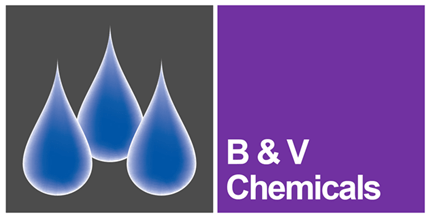In our previous blog, we explored how optimal performance of steam boilers is paramount and how chemical water treatments are used to achieve this. In this post, we look at the standards involved in steam boiler water treatment.
What are the steam boiler water treatment standards?
There are currently three steam boiler water treatment standards:
- BS 2486 “Recommendations for Treatment of water for steam boilers and water heaters” (1997) has been the main standard in use in the UK for many years.
Now there are also European-wide standards, called "BS EN" documents – British Standard European Normative. These are:
- BS EN 12952-12:2003 “Water-tube boilers and auxiliary installations – Part 12: Requirements for boiler feedwater and boiler water quality”
- BS EN 12953-10:2003 "Shell boilers - Part 10: Requirements for feedwater and boiler water quality".
All three are current, valid and have the status of a British Standard, which means they can be quoted as good practice and used as the basis of contracts between clients and water treatment providers.
However, it is worth bearing in mind that none of these standards are legally binding, and they all say: “Compliance with a British Standard does not of itself confer immunity from legal obligations”.
Which standard should you follow?
So, which one(s) do we use? As there are some disparities across the different standards.
The answer is, “whichever we want” or “whichever the client specifies”!
Yet once we commit to using one, this becomes the contractual basis and if we were to swap between the standards we would be liable for prosecution for failure to comply.
How do the standards differ?
The table below highlights the key differences between the standards. The detailed numerical values differ, so the critical factor is to operate in line with the specific values in the chosen specification, or specify them in the quotation to the customer.
|
Discussion Point |
BS 2486 |
BS EN 12952 (Water-in-tube) |
BS 12953 (Water-in-Shell) |
|
Soft vs Demin Water |
Not clearly defined. Difficult to interpret – many footnotes in many tables. |
Clear demarcation. Easy to follow guidelines. |
|
|
Feed vs Boiler |
Clear in unique tables for type of boiler. Many tables. Confusing at first view. |
Clear in 3 tables + 5 Figs for all boiler types. |
Clear in 2 tables + 2 Figs for all boiler types. |
|
Oxygen Scavenger |
To be positive in FW and within defined limits in Boiler for several agents. |
Stoichiometric excess in FW. No requirement in Boiler. No specific agents referenced. |
|
|
Oxygen in Feed |
To be as low as practical with scavenger for “0” at boiler inlet. |
<0.02ppm. |
Specified vs pressure. |
The EN’s appear radical because they do not include any specifications for oxygen scavenger in the boiler water. Technically, this has become common in HP boilers, but is a massive change of emphasis for package boilers and may affect the way we service such plant.
EN’s seem to infer phosphate is mandatory but in Section 4 "Conditioning", Note 1 acknowledges the use of polymers (and chelants), allowing their use but says: "...the quantities and methods for use as well as analysis method shall be specified by the supplier...". In other words – we can use “anything” but we need to state what and how we control it etc (in our quote or site Operations Manual – ie “the contract”).
Other parts of the BS EN standards define factors such as design, workmanship, inspection, safety and operating instructions, but these do not generally affect the water treatment provider.
Other guidelines exist such as VGB, EPRI and ASME, all with nuances but all offering the same fundamental advice. If in doubt, please do contact our technical department.
Summary
There are three steam boiler water treatment standards. All are current, valid and can be applied to any project, but have slight variations. Once a standard is chosen, it must be stuck to.
Look out for more upcoming blog posts on steam boiler water treatment. In the meantime, please get in touch if you want to learn more about the different standards or have any questions.





